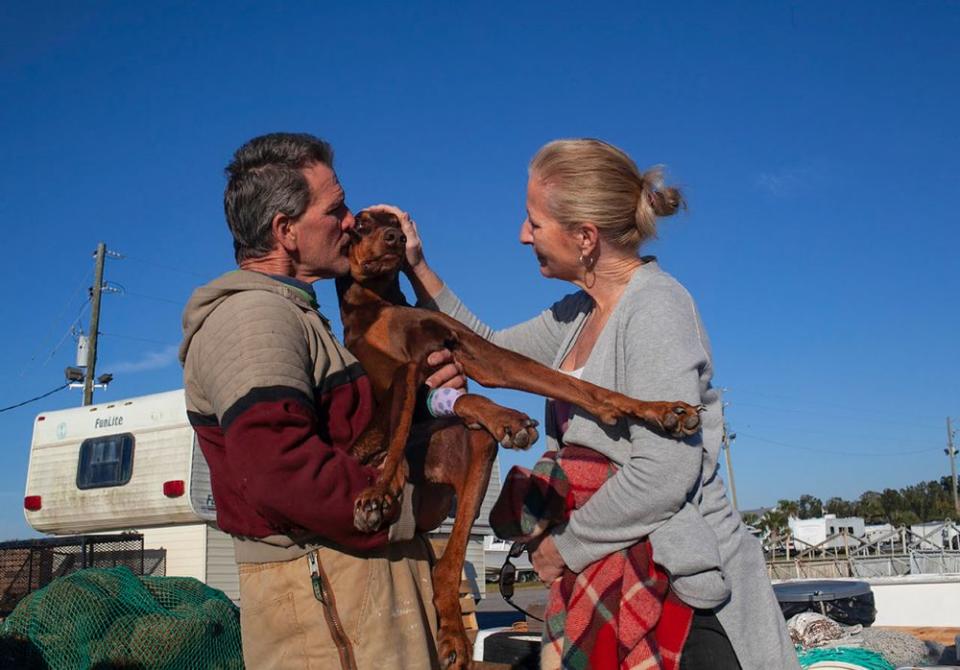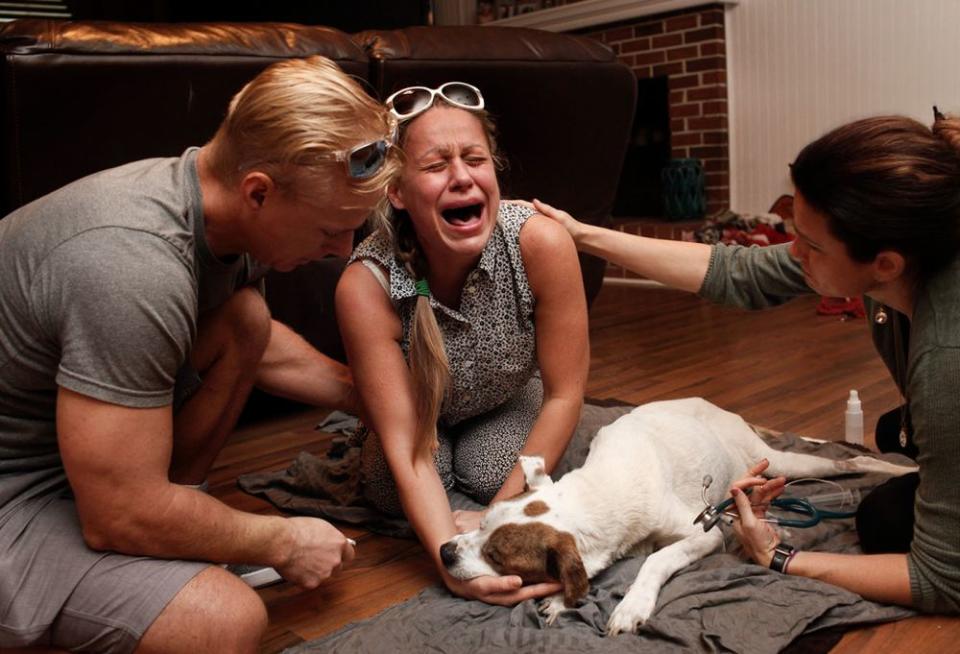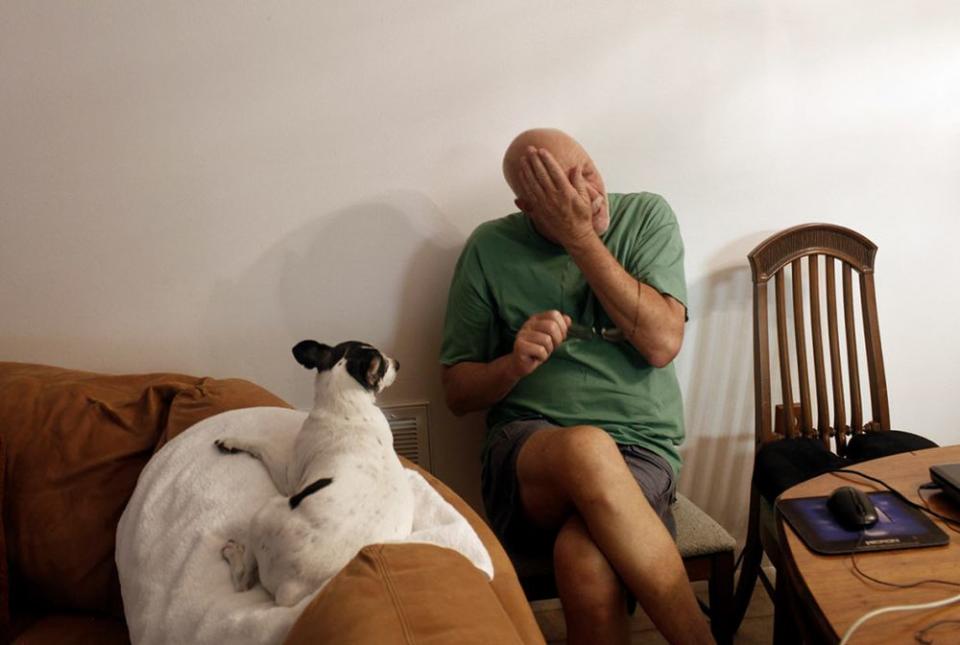Heart-Wrenching Photo Series Captures the Pure Emotion and Anguish of Euthanizing a Beloved Pet
“I’ve loved you for so long,” said Juliet Rubio as she laid by her dog, Dingo. “I hate this, I hate this,” she said over and over again before the final injection. “He’s given me so much comfort.” As he started to die she cried over him saying over and over, “I love you, I love you. Soon, you’re going to be free again.”
Any pet parent who has spent those precious last months, weeks, days and, most of all, hours, with a failing animal knows the anguish involved with the decision to euthanize their baby. Unless you’ve been through it, the heart-wrenching scenario is hard to imagine. But sometimes, knowing what to expect — especially when emotions are intensely fraught — as well as the awareness of others who’ve experienced the same struggle, can provide some solace during a very hard, sad time.
It is in that space of heartbreak and sorrow that Ross Taylor works. The 47-year-old assistant professor at the University of Colorado Boulder and freelance photojournalist from Denver has recently gained attention for a photo series called “Last Moments.” PEOPLE spoke to Taylor to learn more about this unique project, which he and friend Luke Rafferty plan to turn into a feature-length documentary film.

Taylor says he became aware of at-home pet euthanasia when a close friend was faced with the tough decision of euthanizing her dog. “I was profoundly moved by witnessing her struggle, and her love for her dog,” Taylor tells PEOPLE. “Without a doubt, it was one of the more difficult days of her life. Around the same time, I was seeing friends in my social media feeds posting memorials of their beloved pets almost weekly, often in the most heart-wrenching of tributes. They were a somber, but beautiful, testimony to the human-animal bond, and the pain that comes when it’s broken. Yet, it’s a moment that is rarely witnessed outside the family dynamic, nor documented.”
Taylor researched the topic and didn’t see it represented much, especially the kind of intimate situations he now captures. He felt an intense compassion for those going through this ordeal, and hoped to shed light on the issue, to help others feel less alone. Taylor decided to reach out to a variety of places that specialize in pet in-home euthanasia, and became connected to an organization called Lap of Love and its founder Dr. Dani McVety, who seemed to understand the purpose of the project. He’s also worked with an organization called Caring Pathways in Denver.

“Both organizations are amazing and have been incredibly kind. The work that these organizations do, and others like them, is important,” Taylor tells PEOPLE. “It’s because of openness from … the veterinarians, the care coordination teams and those who allowed me into their home, that all of this is possible. All the people in the series agreed to be photographed prior to arrival; we would never just show up and ask people if it was OK to document the moment. Some families didn’t want to take part, which is understandable, but many [did].”
Taylor explains that during these intense photo sessions, he feels profoundly aware of the gravity of the moment. But he has also discovered that people want “to be heard, to feel less alone in tough situations.” He says his most memorable image is of Olesya Lykovi as she cried out moments after her dog passed. “It was one of the most intense moments I’ve ever witnessed in my entire life. My heart simply broke open for her, it was hard to keep my own emotions in check. I can still hear her cries. It was early on in the project, and it was in this moment that I understood the importance of this. I feel so much respect for her and for the pain she went through,” says Taylor.

In terms of his process, Taylor always follows the lead of the veterinarian. “They have the final say, and I always respect whatever they, or the families, express. My priority is the comfort of the family. I try to move quietly and make as little sound as possible. If a family asks me not to take a photograph at a certain time, I respect this. I also offer the chance, if families want, for a family photo with the pet before as a final tribute.”
“It usually begins by a greeting, and a brief explanation of my purpose. Then, the families often share stories about their pet. Importantly, they talk about not just the illness, but about the pet’s life story. It’s a way of honoring them, I think, and I’m always so touched by people’s sharing of the story of their pet,” Taylor says. “I was witnessing something that (outside of the veterinarian world) was almost a hidden pain, shared by many. Many times I didn’t photograph because the moment was too fragile. I never want to … make a situation worse.”

Taylor has received many positive comments and notes from people about Last Moments; the notes are often from animal lovers who say that they’ve been through the same, almost universal experience. “Some families have asked to see the entire set of images I made while with them, which I send at their request,” he says.
Finally, if there’s one key sentiment Taylor hopes viewers will take away from this project, it’s that he feels it is crucial not to take lightly the pain experienced at the loss of a pet: “A deeper compassion for those going through this is something we all need.”
You can see more of Ross Taylor’s work on his website at www.rosstaylor.com or on Instagram @rosstaylorphoto.


